Abstract thoughts. Concrete forms.
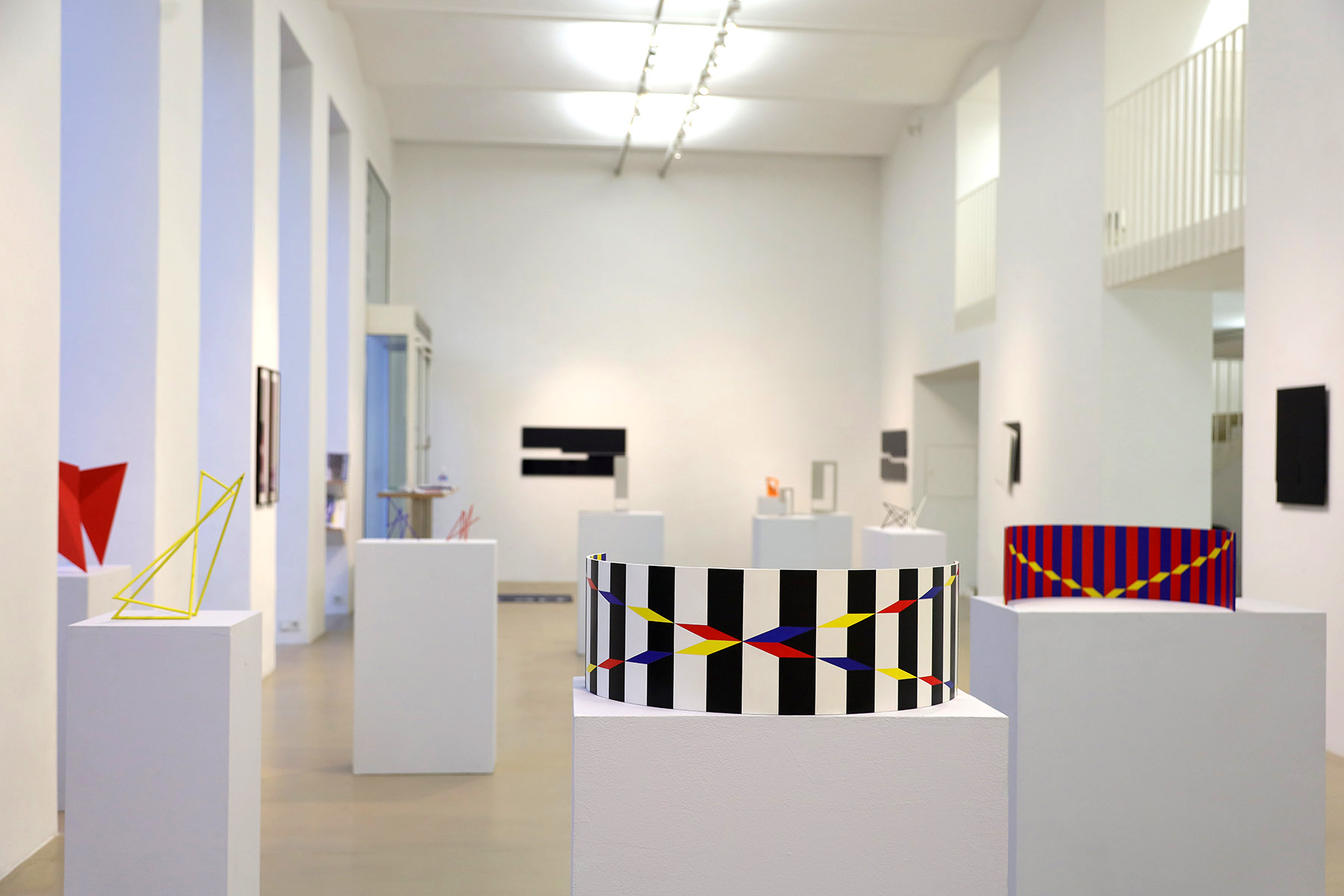
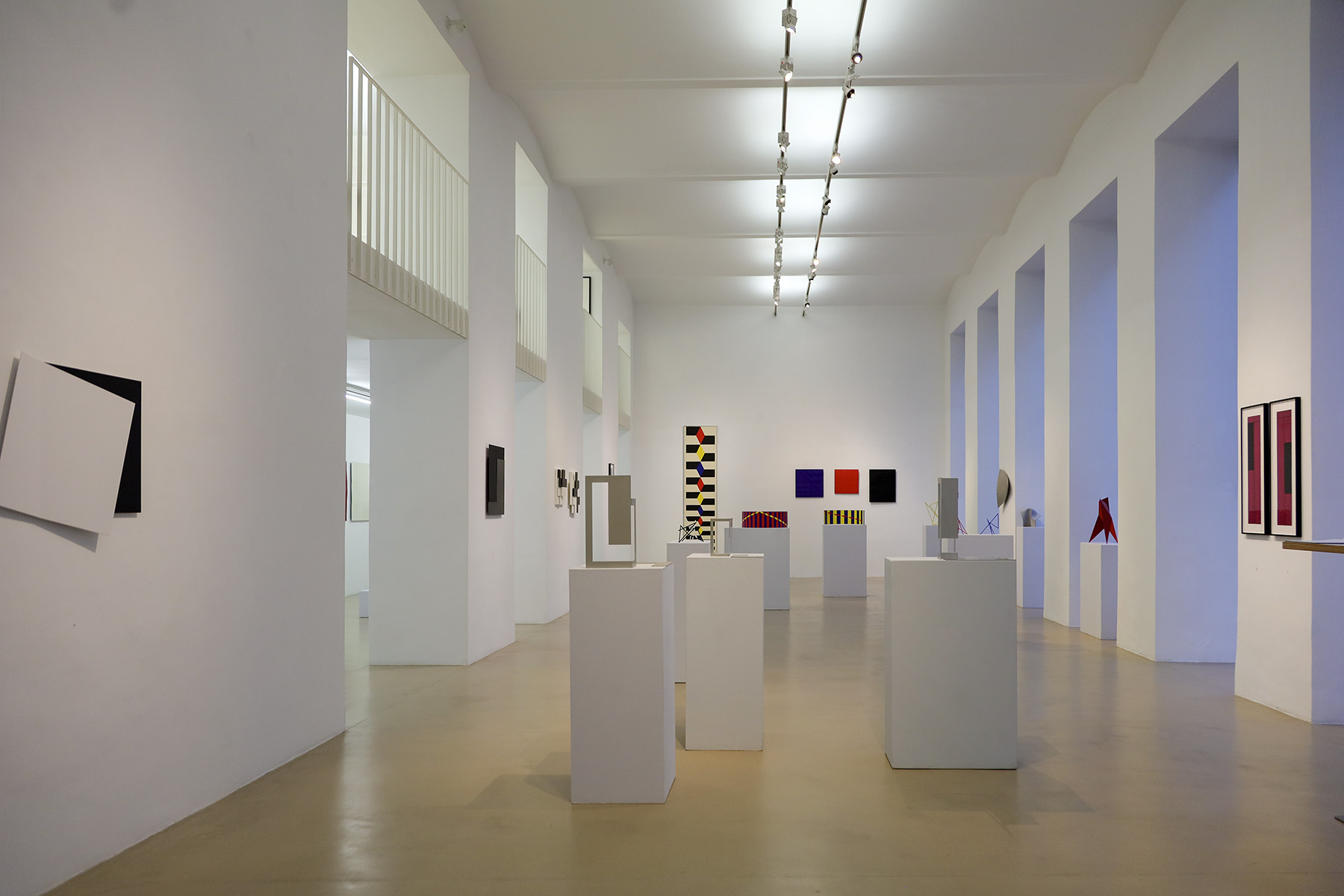
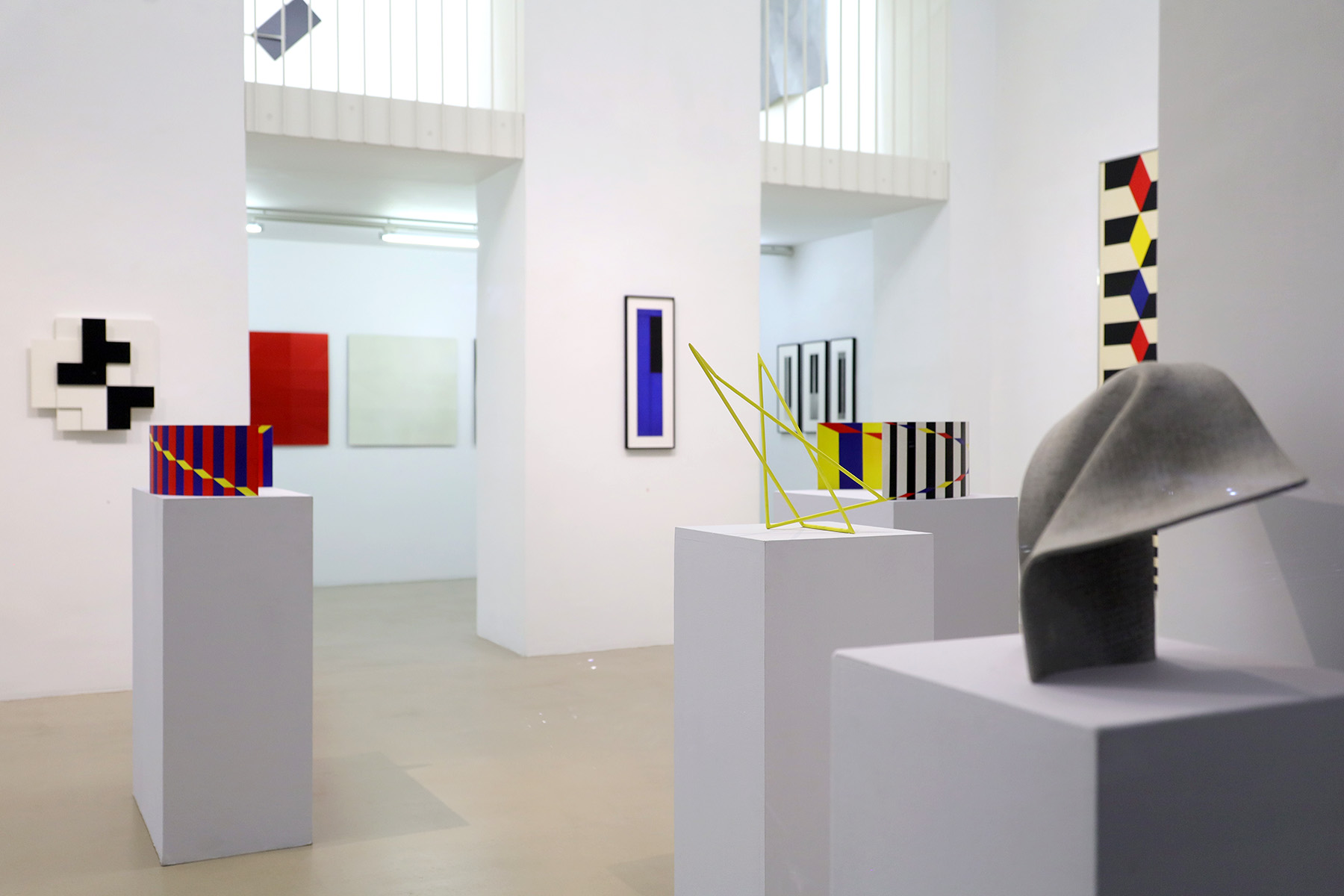
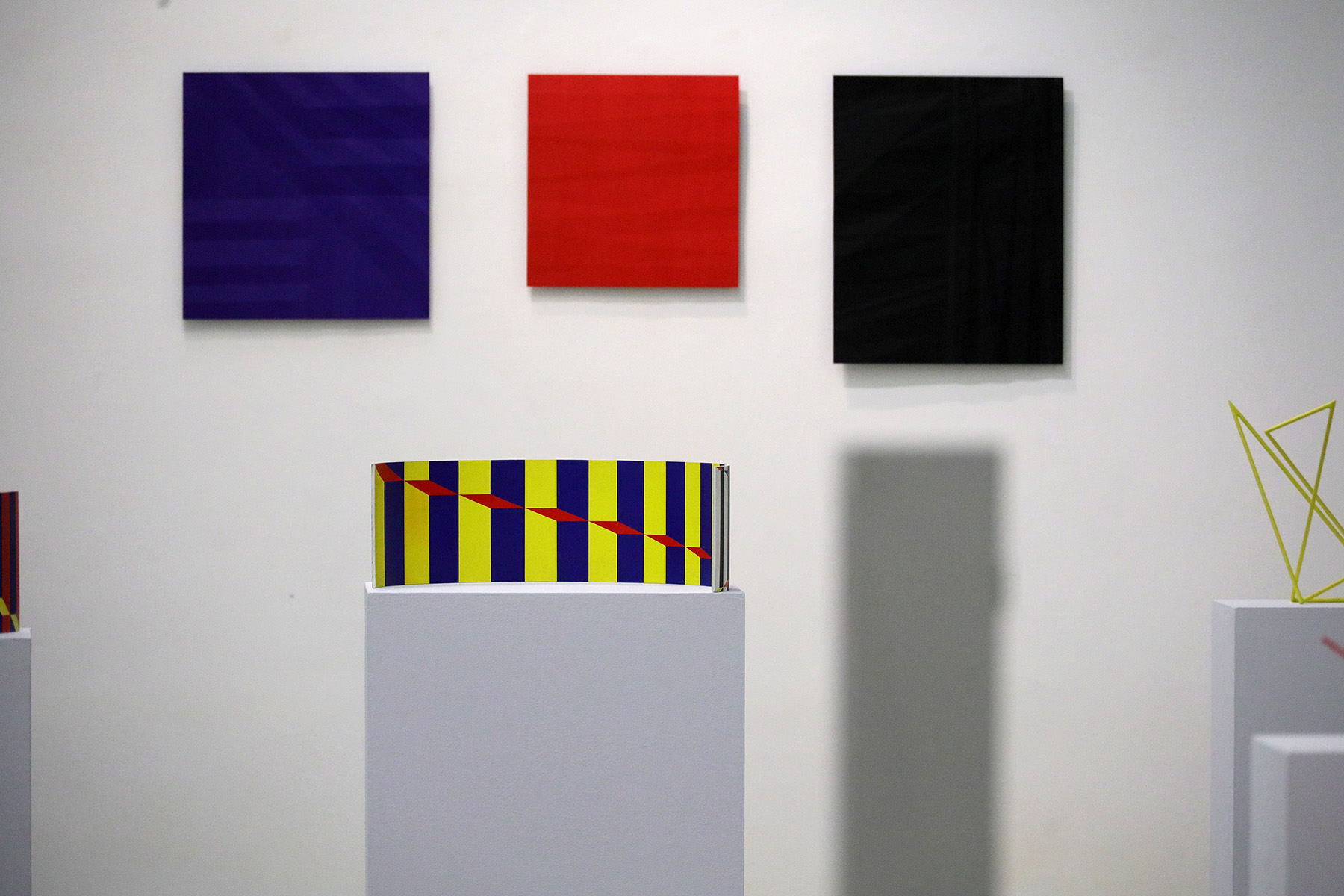
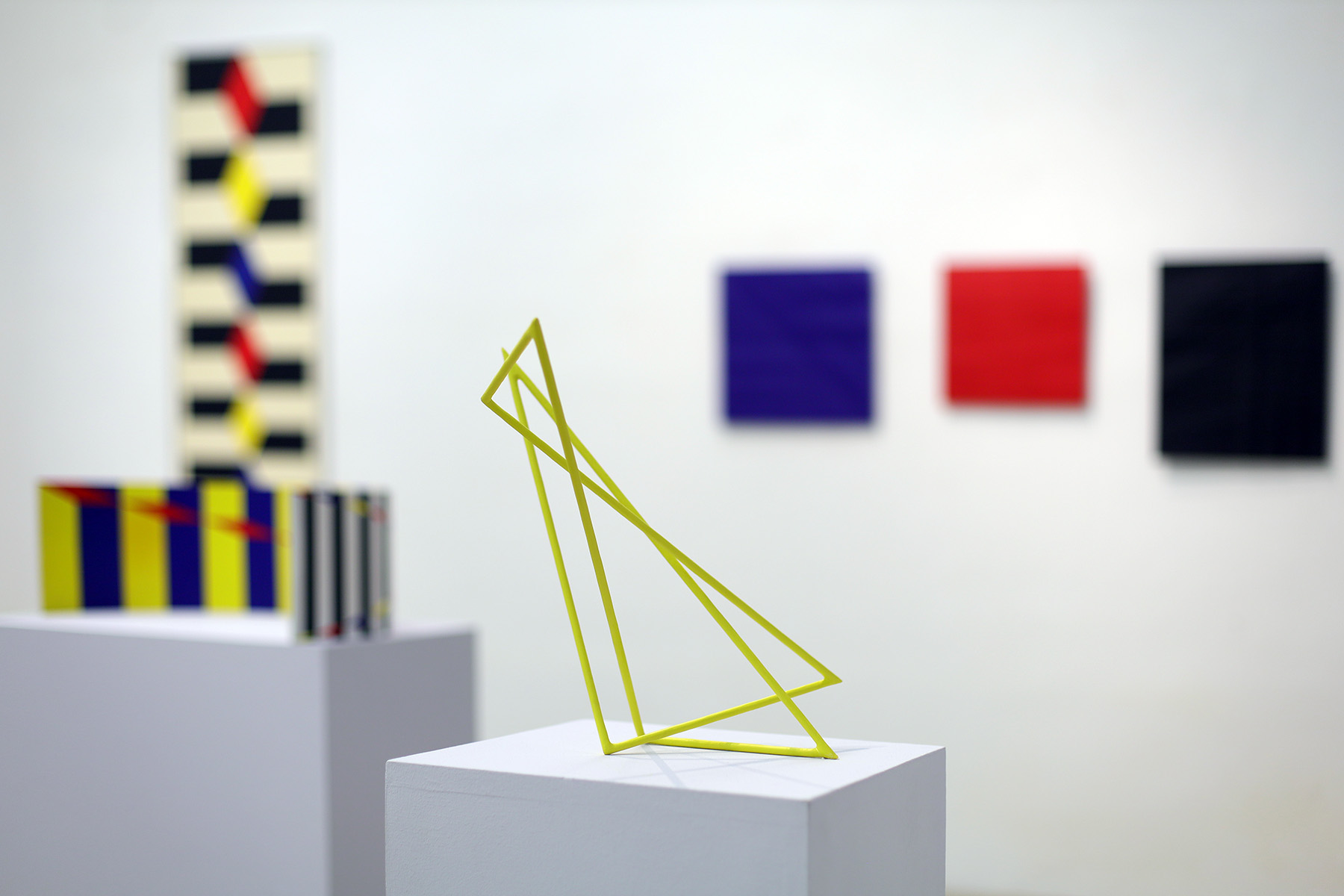
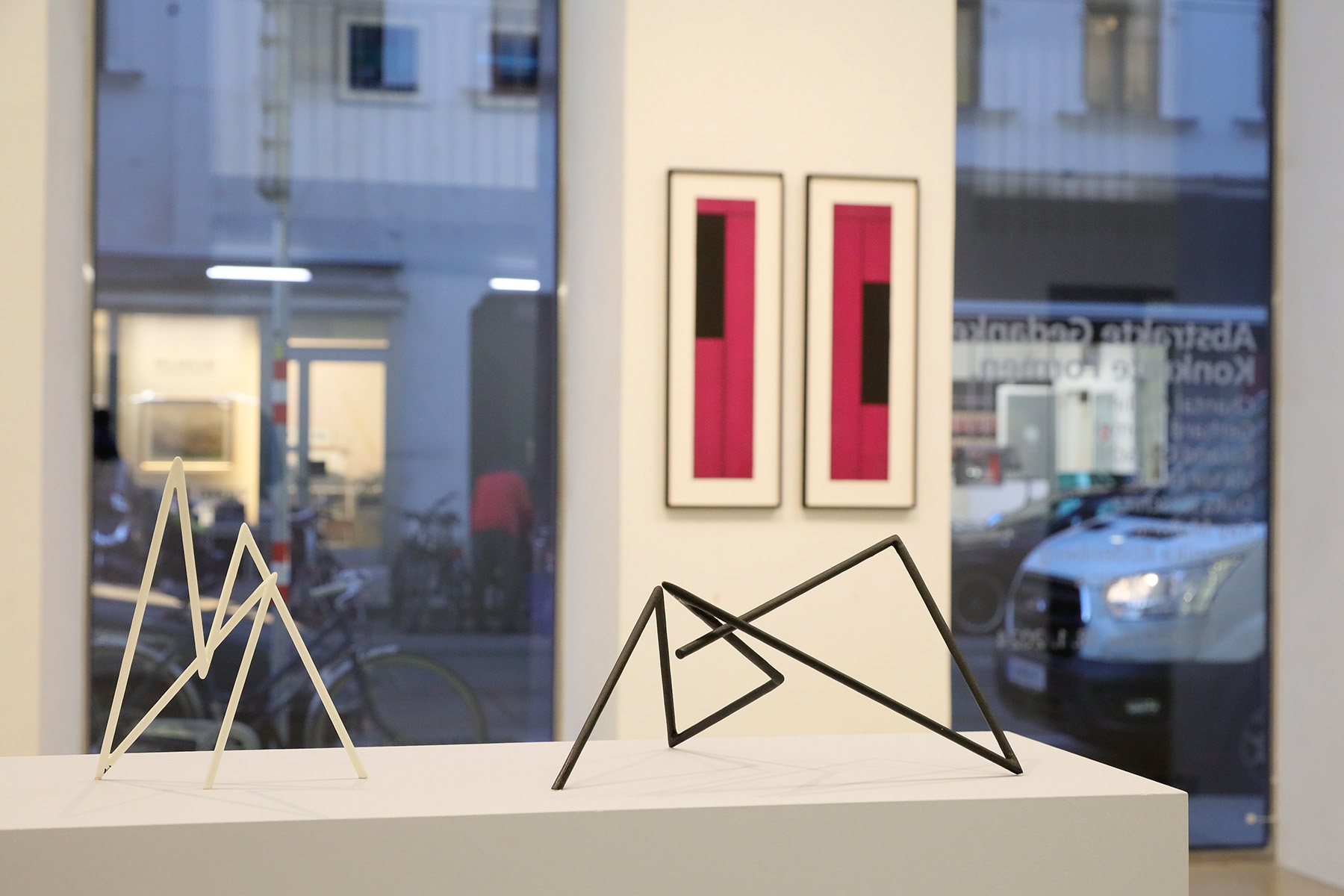
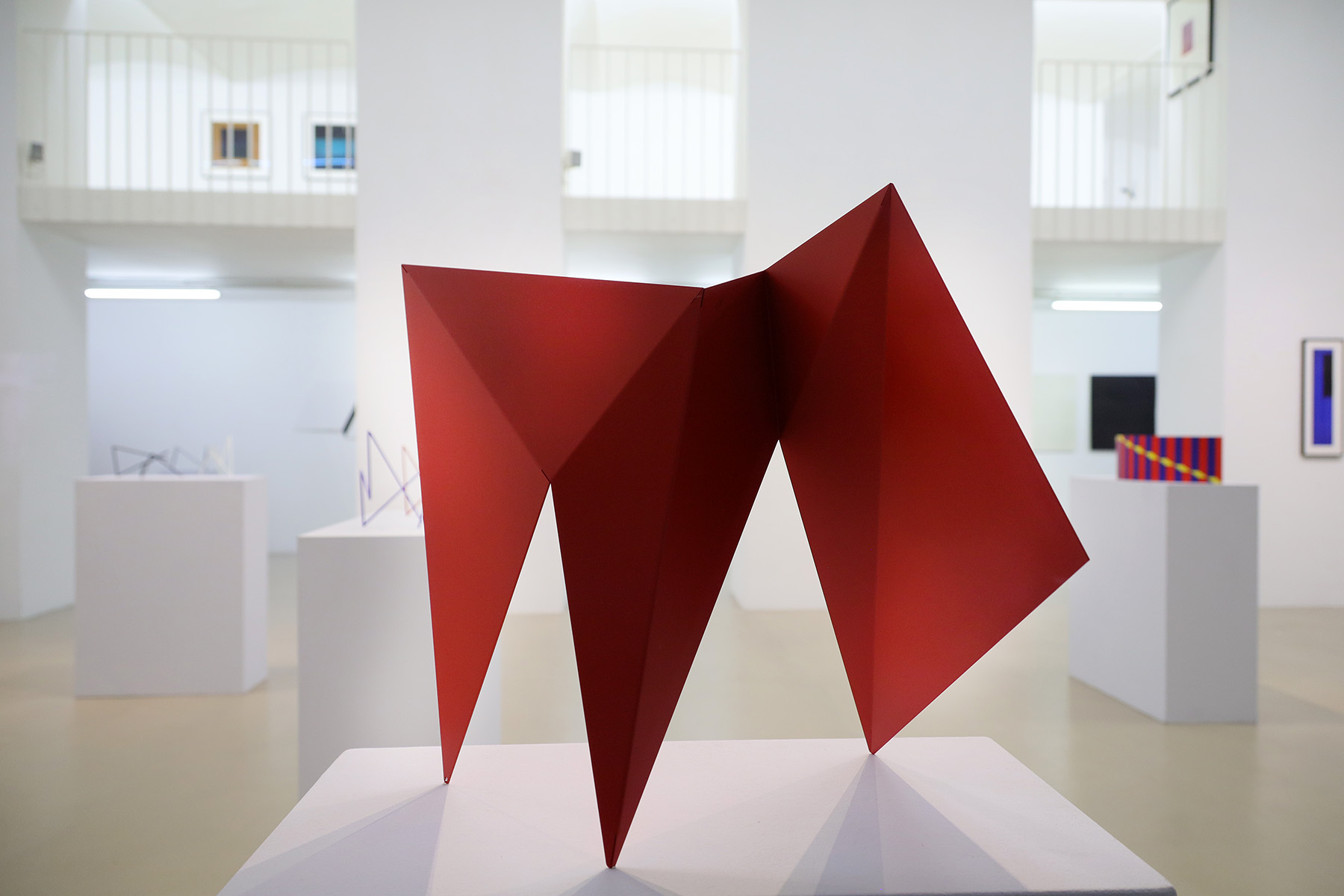

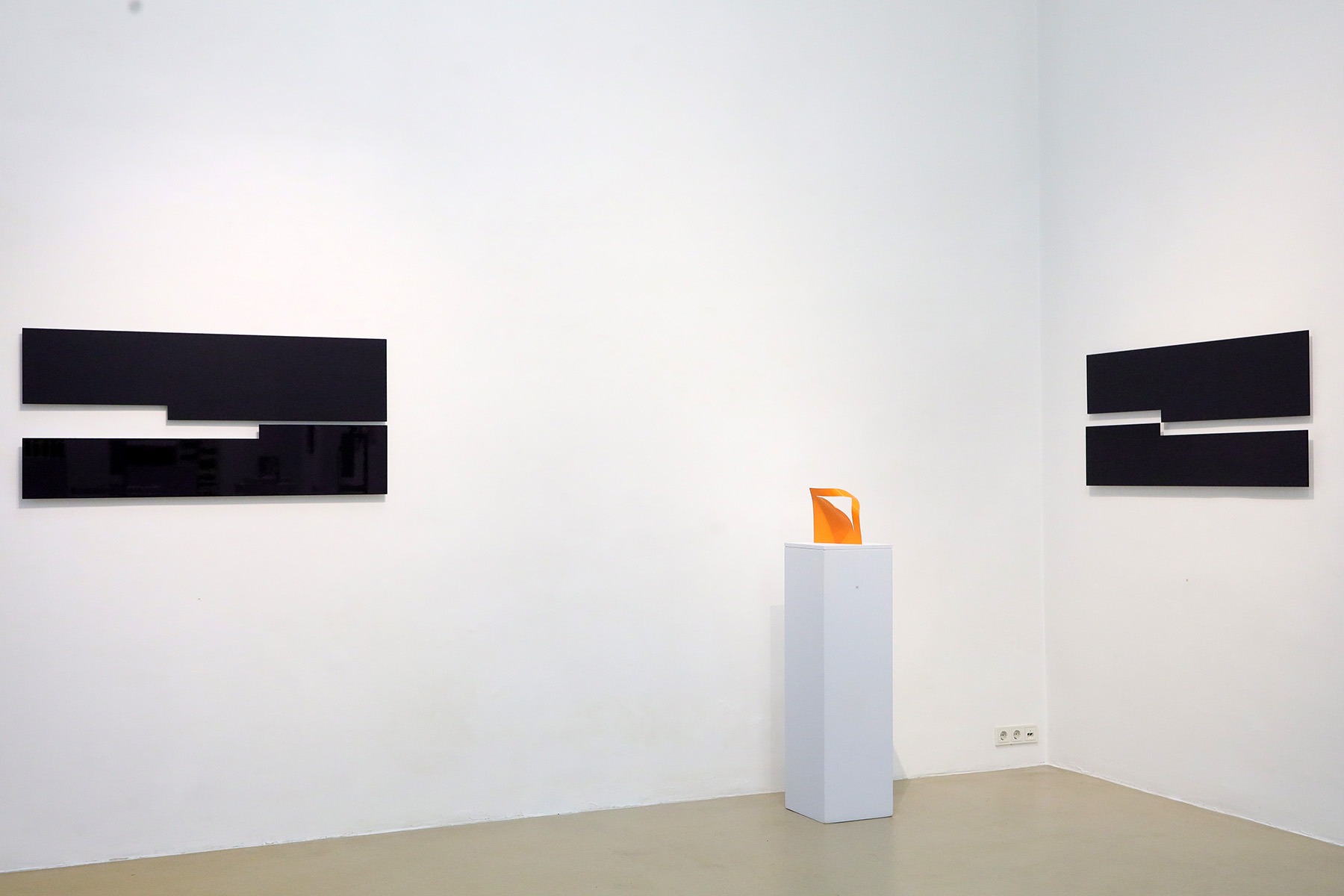
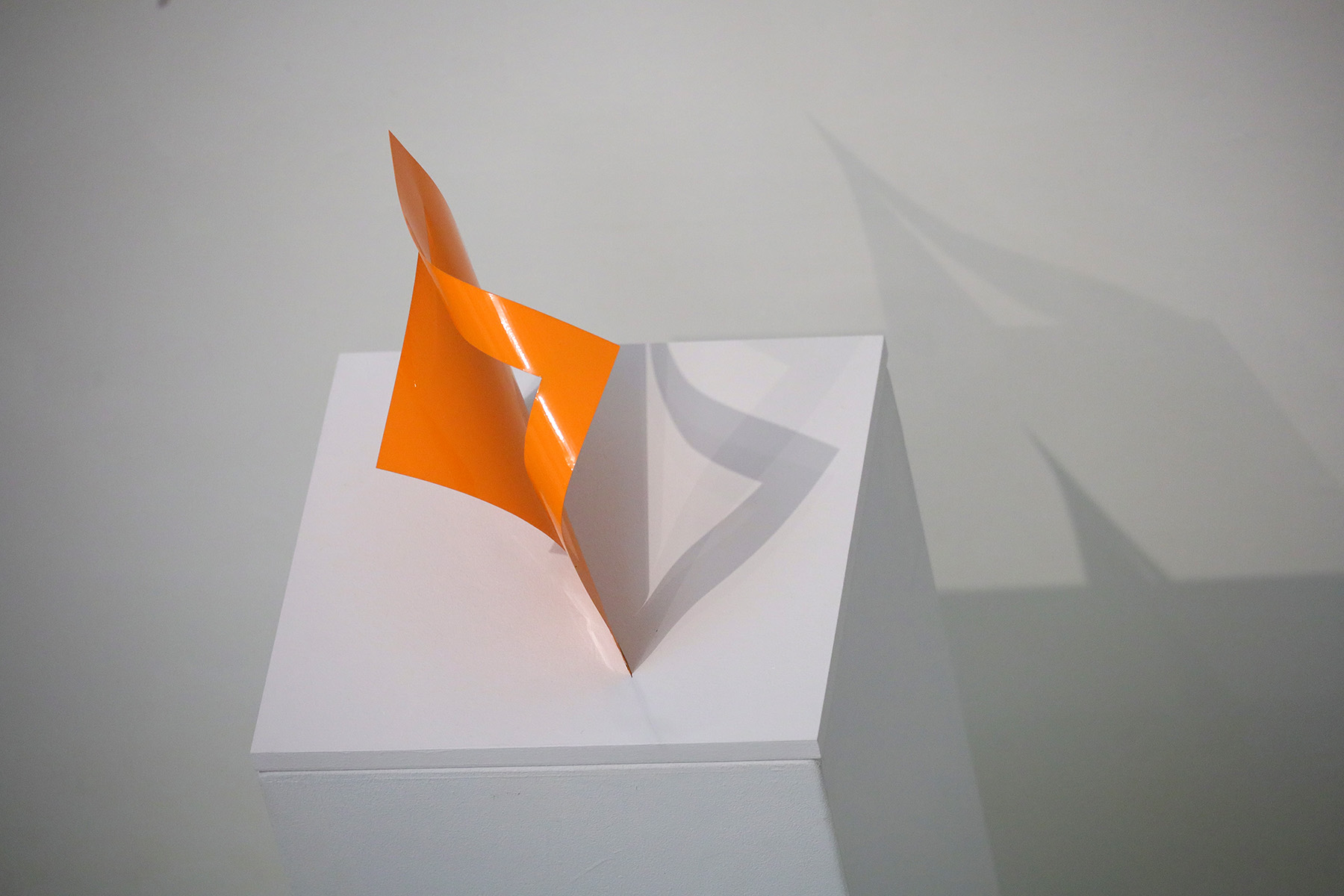
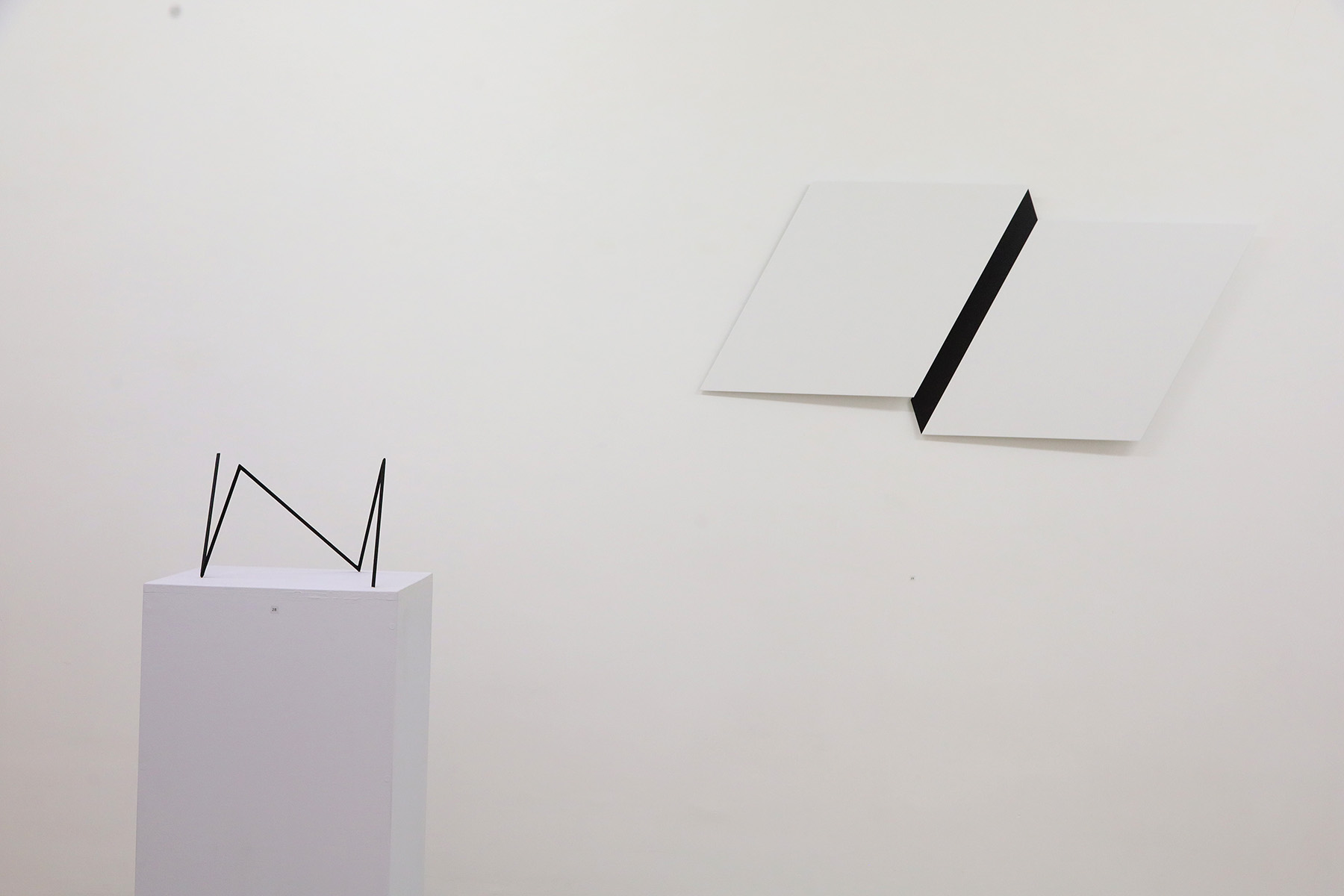
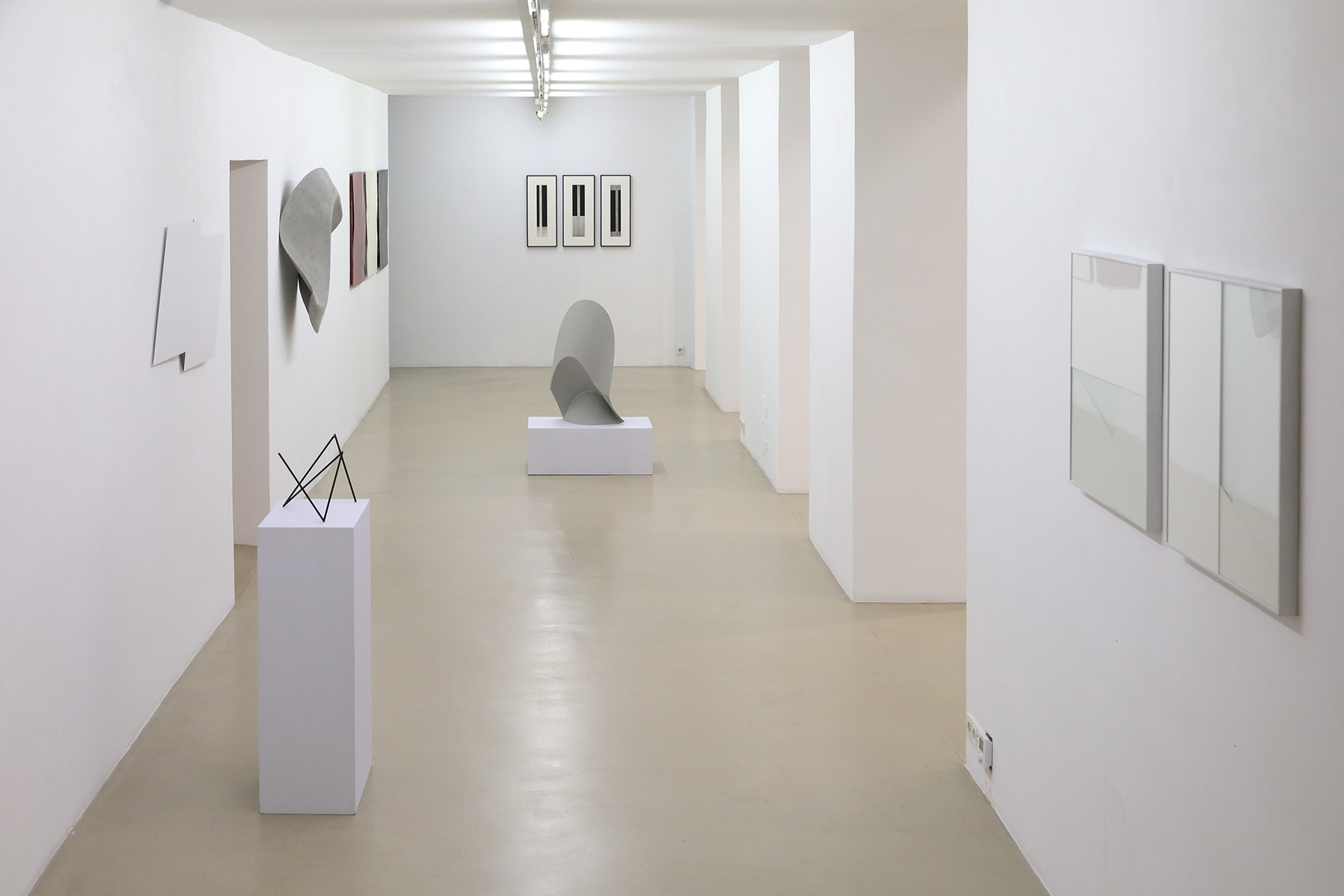
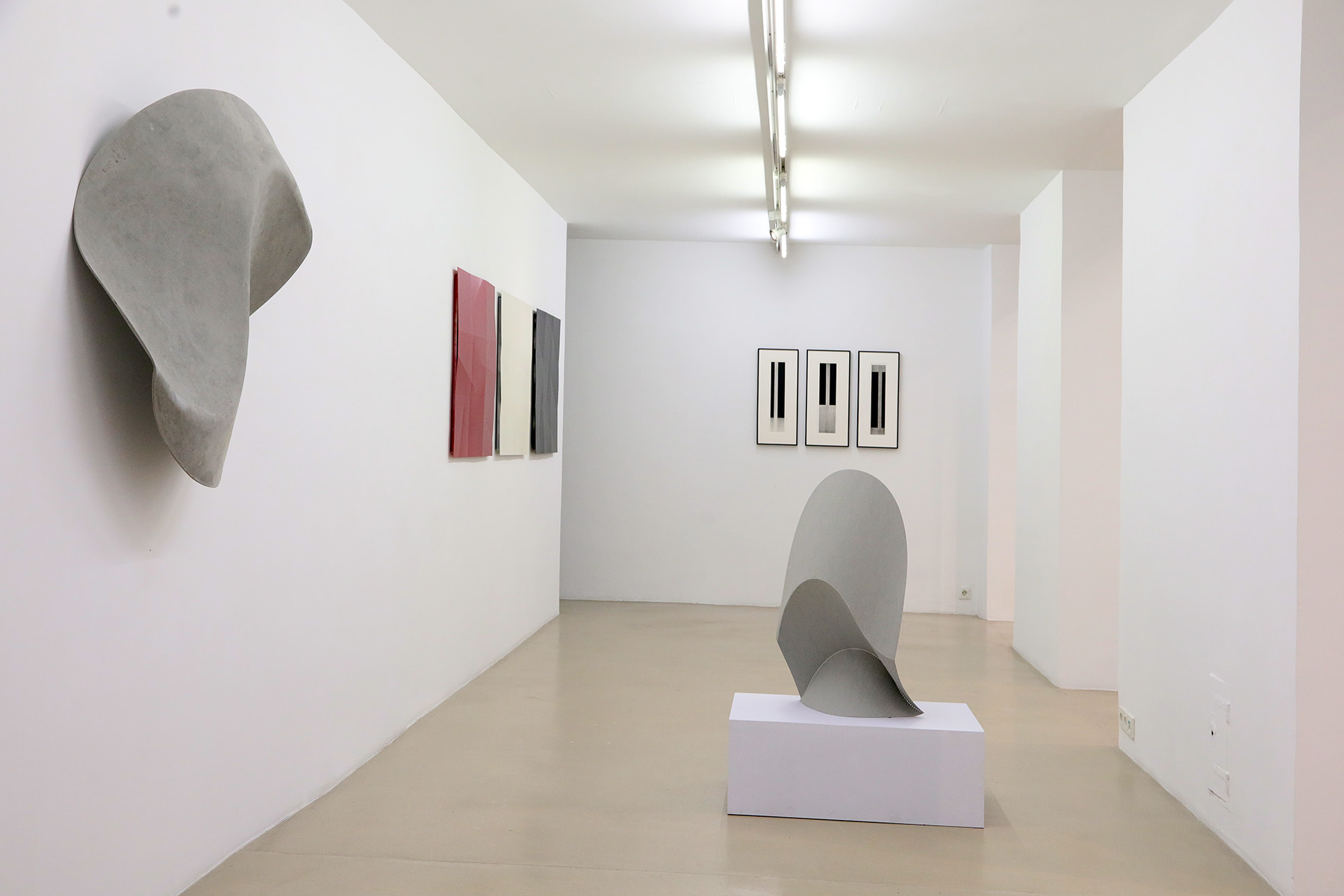
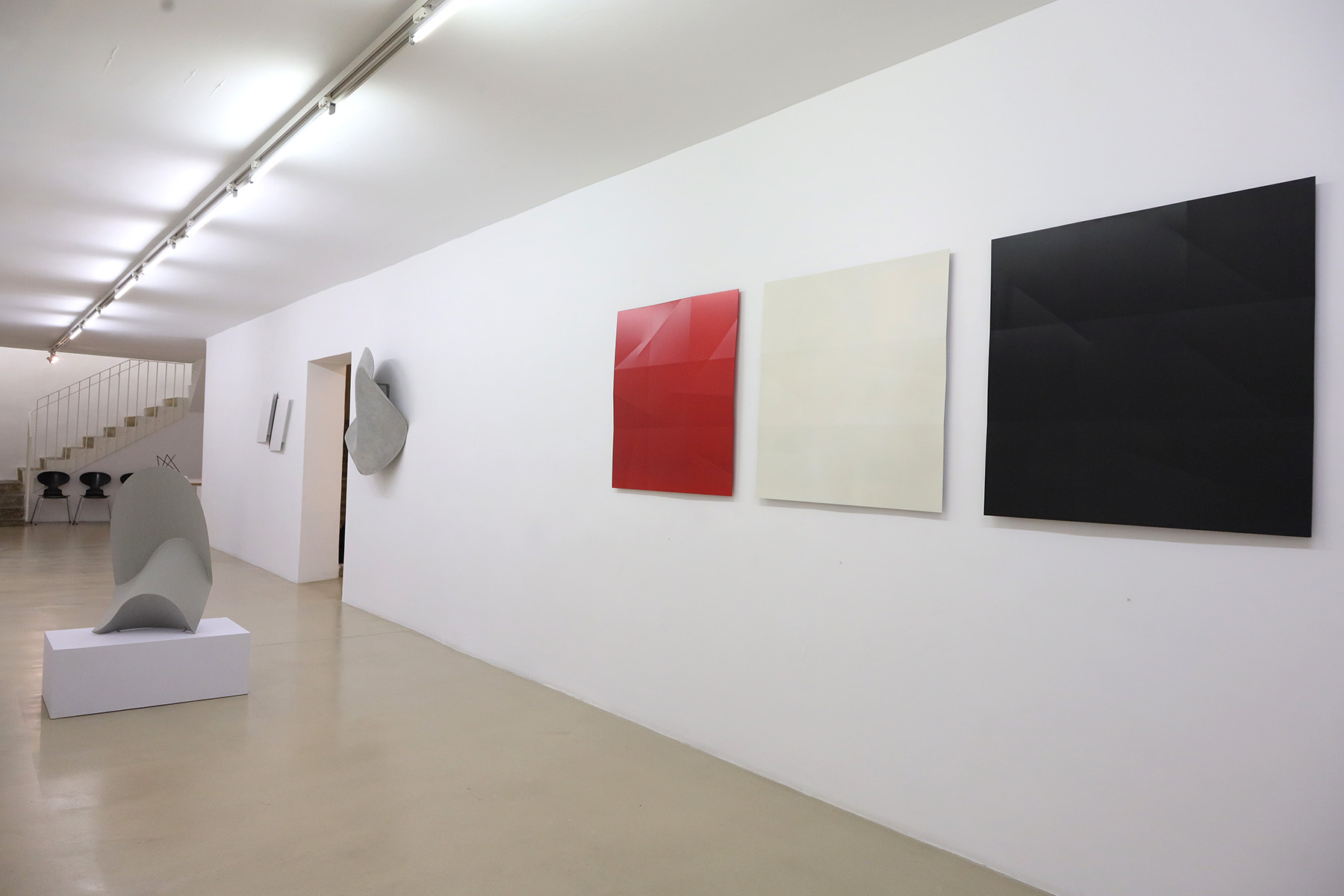
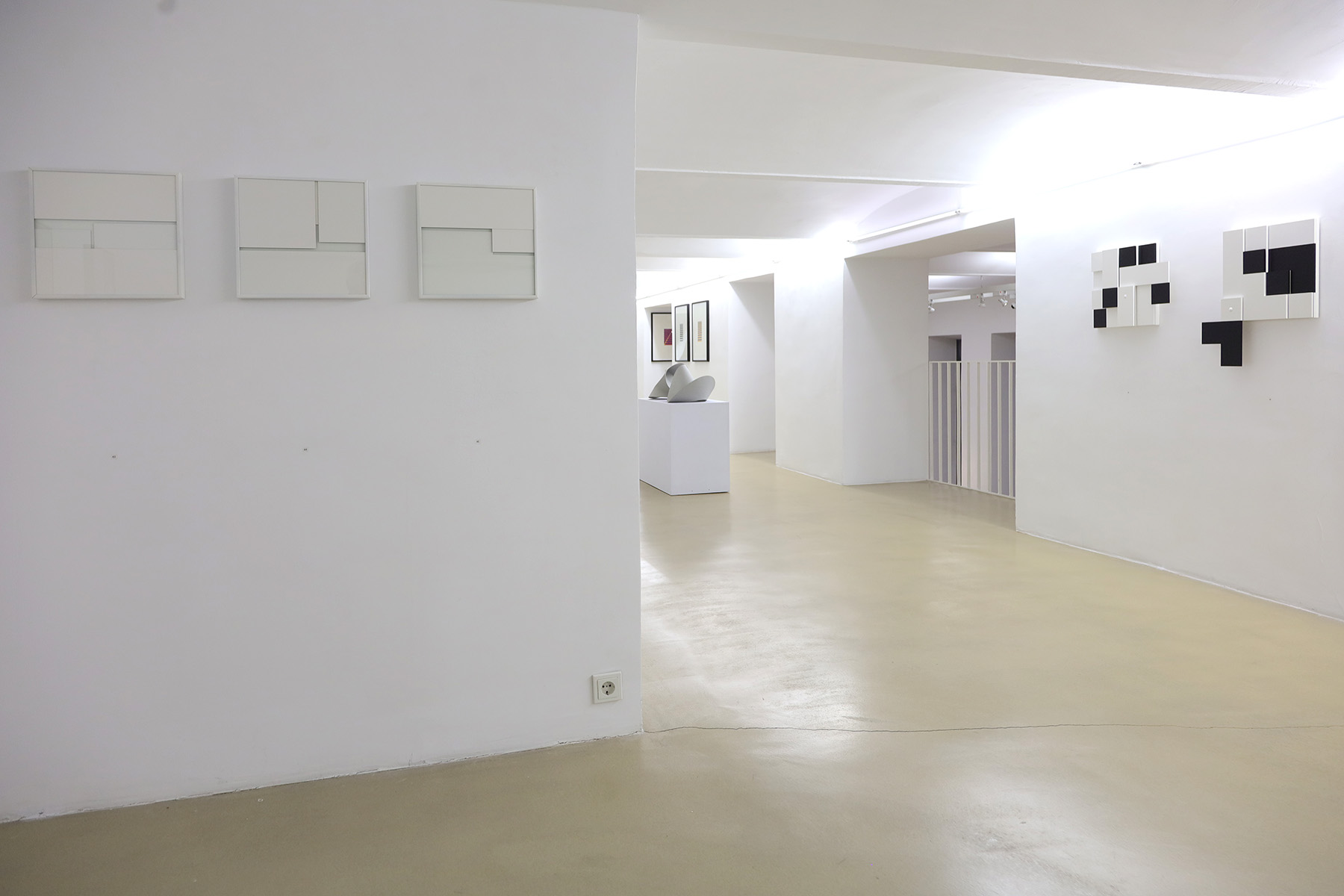
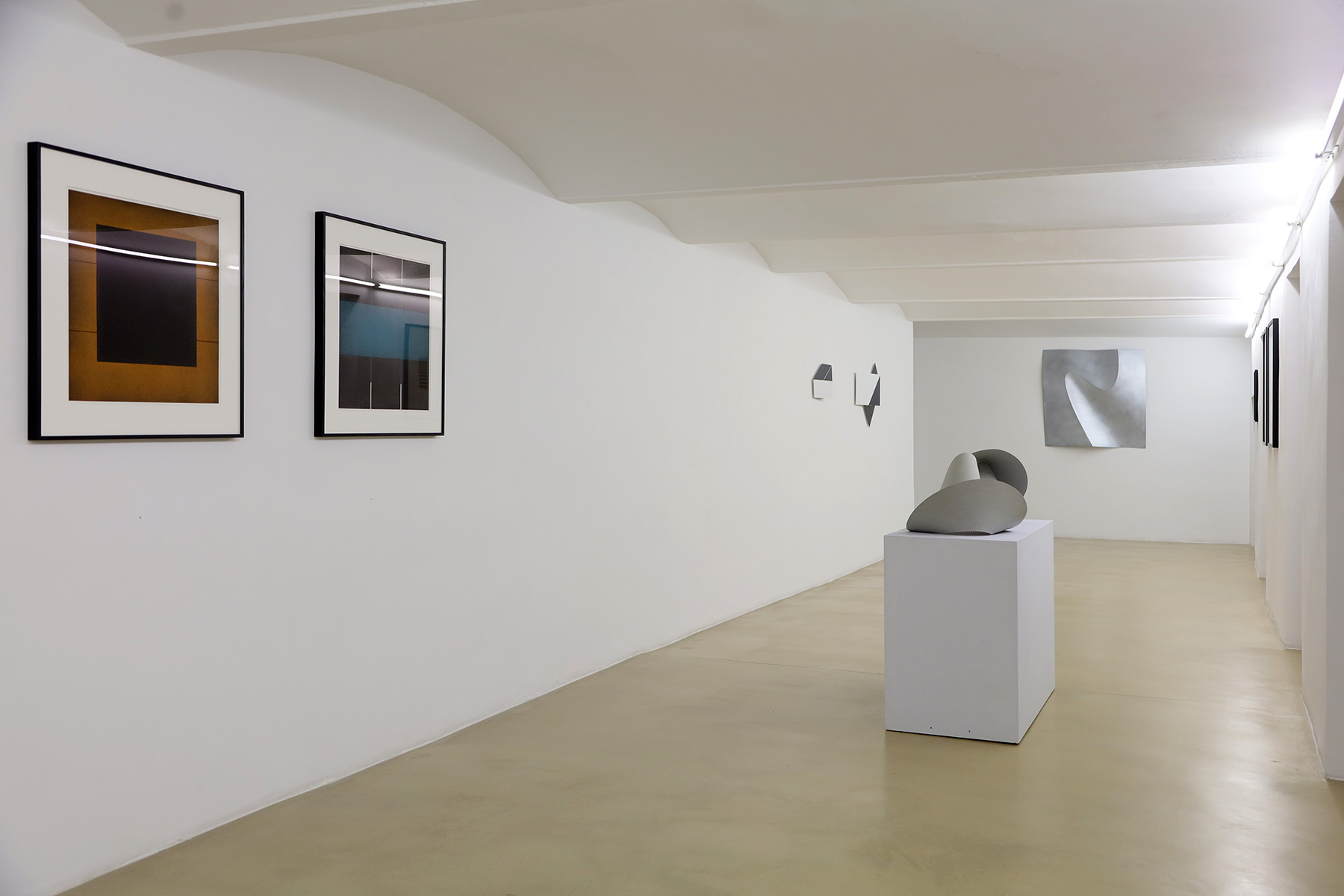
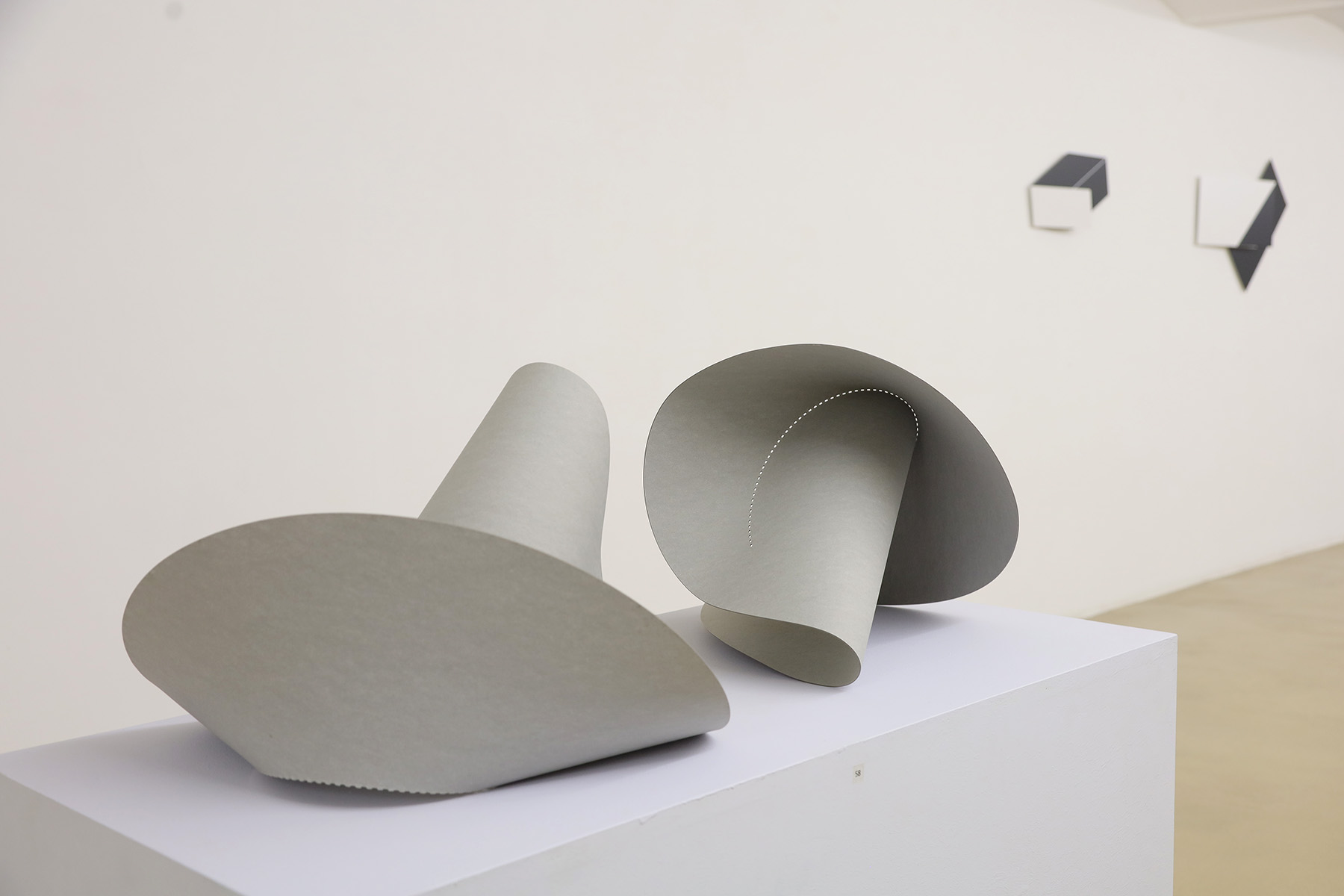
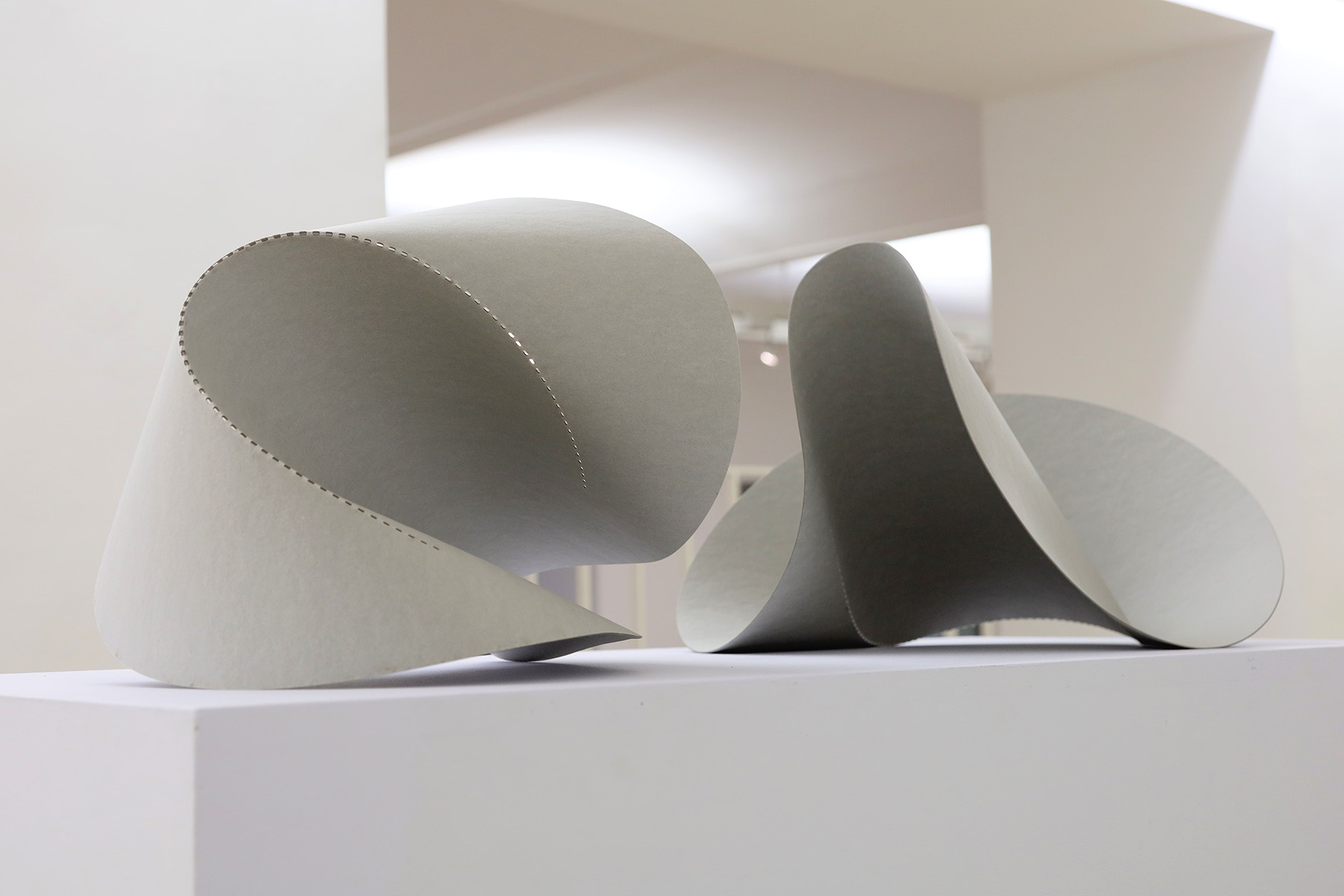
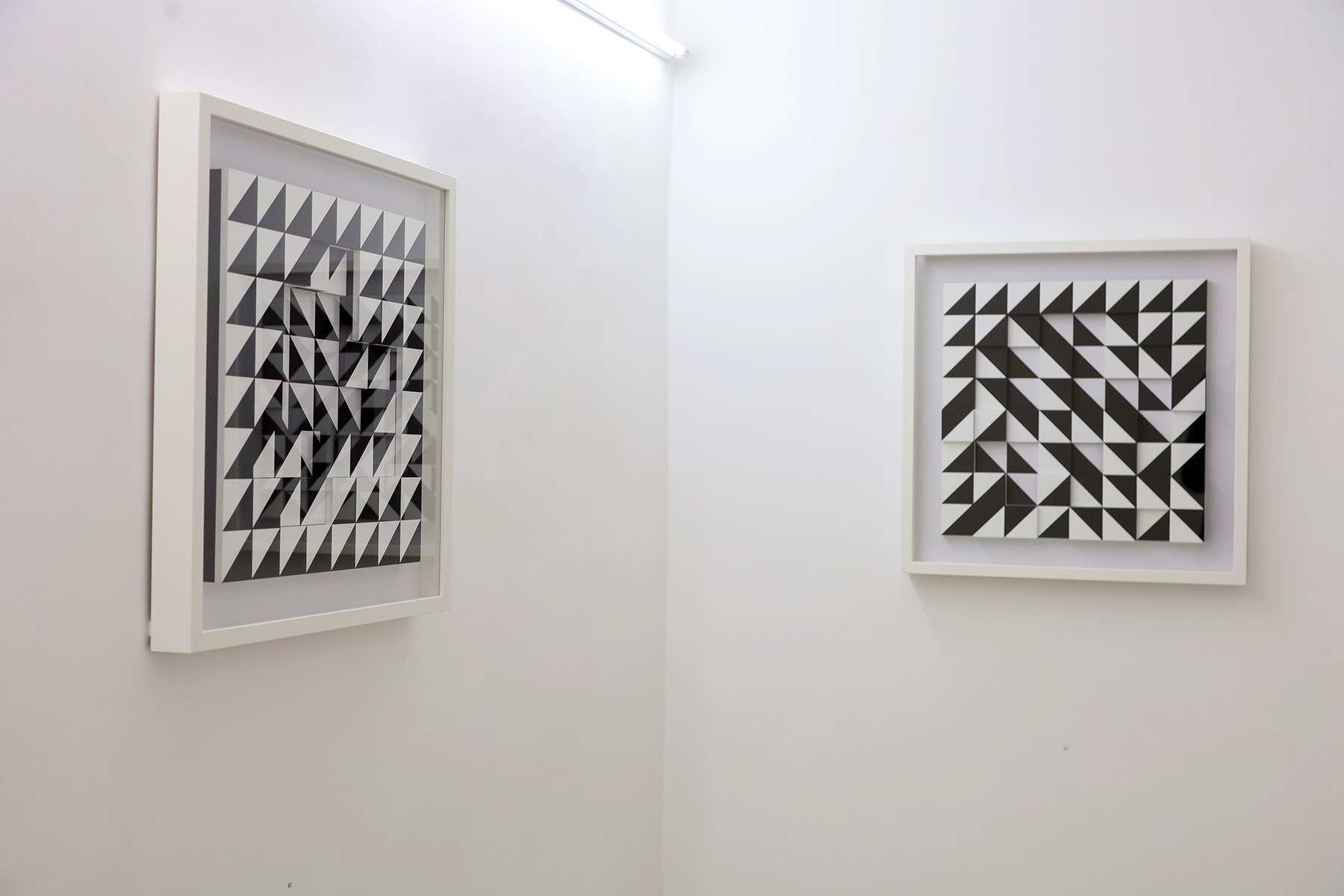
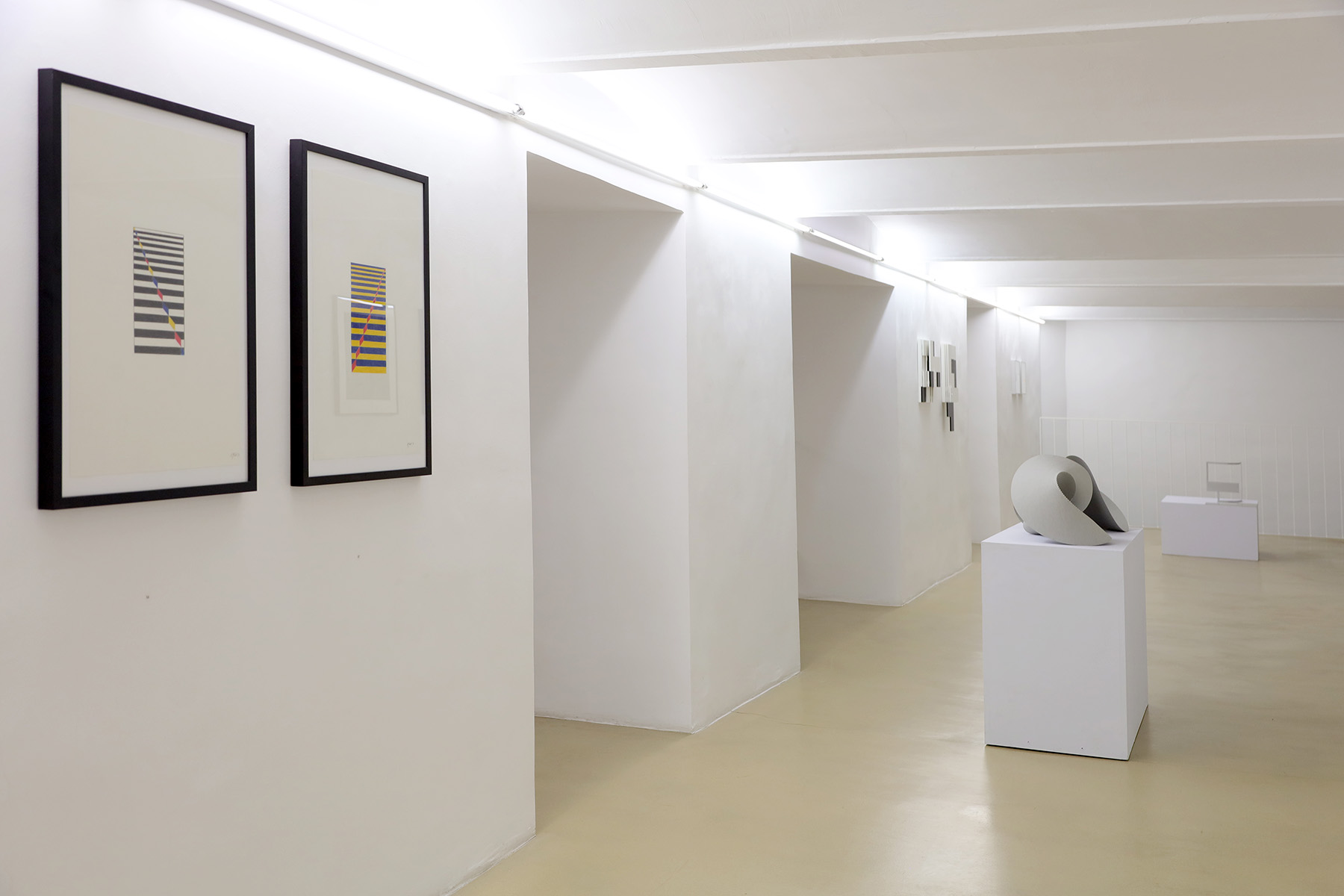
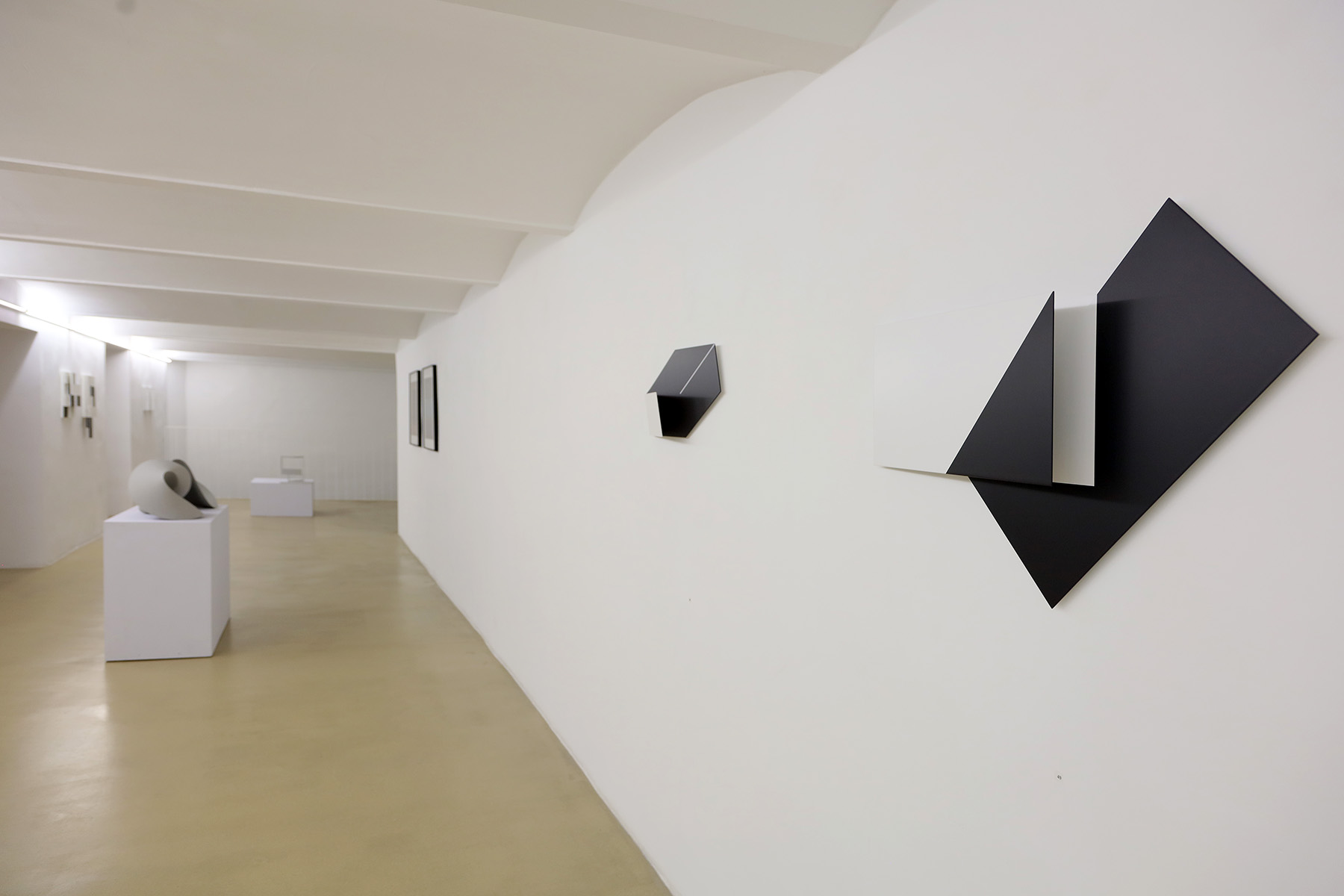
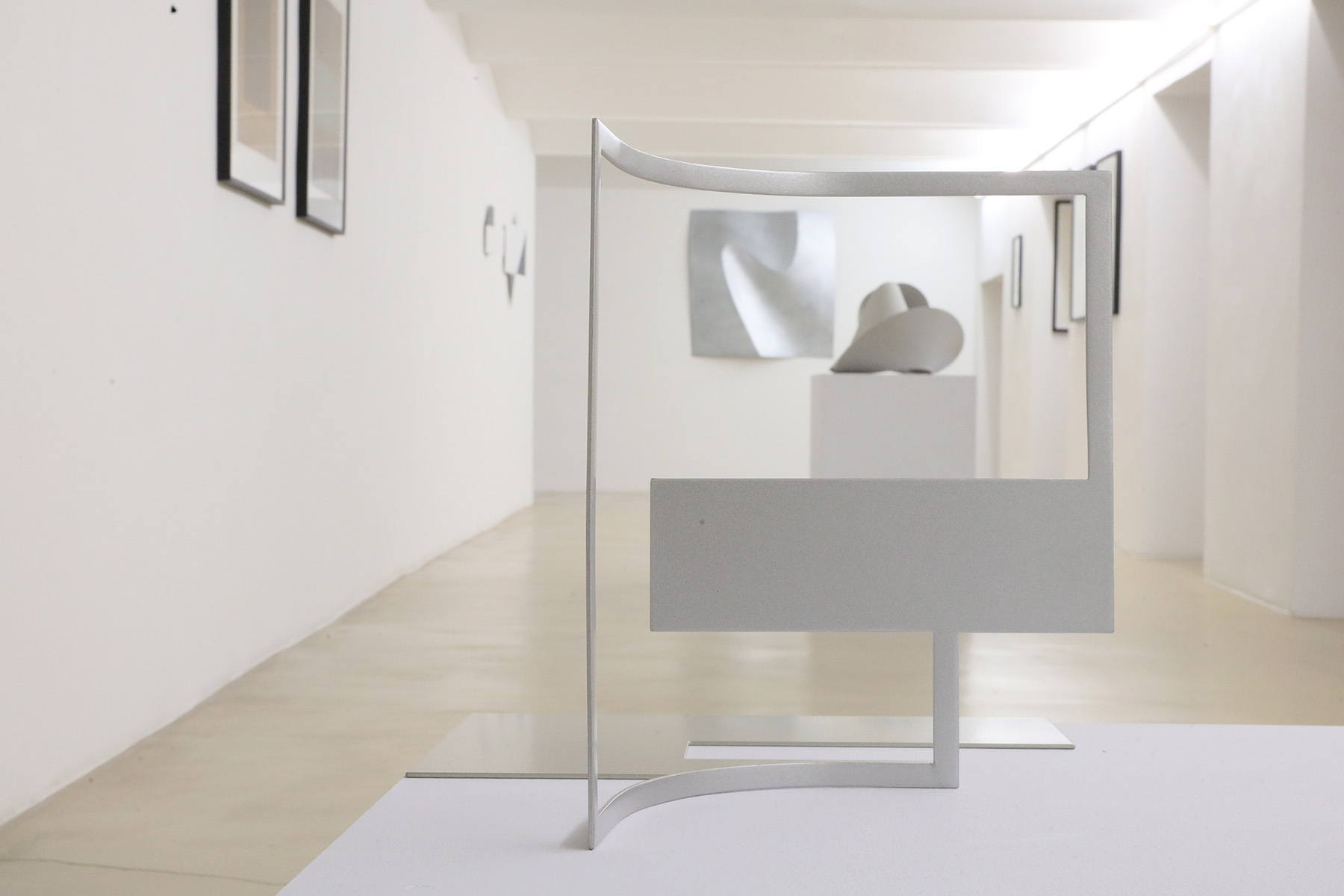
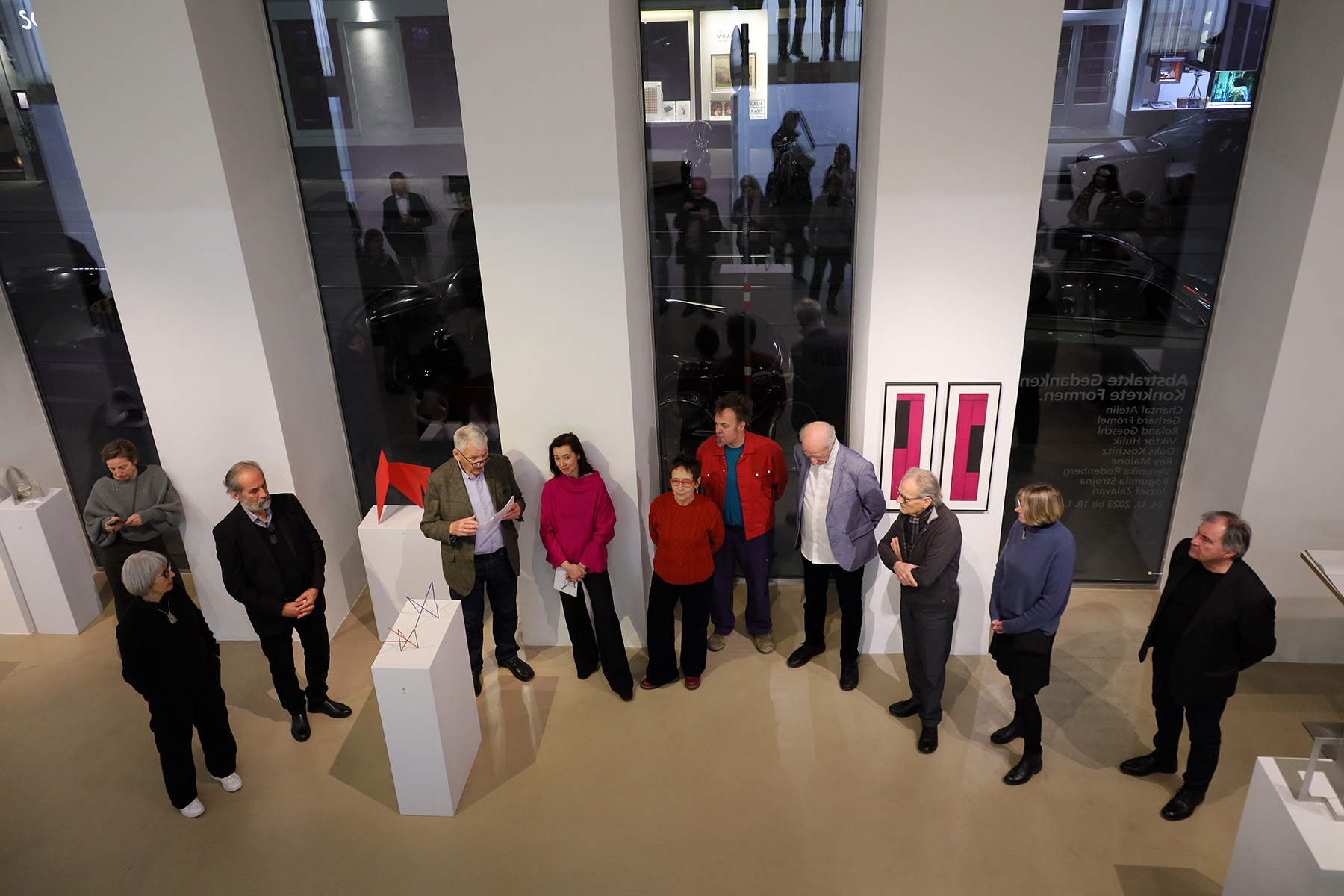
Chantal Atelin
Gerhard Frömel
Roland Goeschl
Viktor Hulik
Duks Koschitz
Ray Malone
Veronika Rodenberg
Bogumila Strojna
József Zalavári
on view until 18 January, 2024
opening-words by Dieter Bogner
opening-words by Dieter Bogner
Line, surface, form and space are the formative elements in both Constructive and Concrete Art. Behind geometry, logic and reduction, emotion and esprit come as a surprise. Contrast, harmony, rhythm with breaks question the visible and create lasting tension in dialogue.
Chantal Atelin bends and welds steel rods and metal lines into architectures. The geometric construction delimits the emptiness that surrounds and penetrates it. The exterior space connects with the interior space. The supporting element is the void into which Chantal Atelin draws her "air sculptures", seemingly weightless landscapes.
The purist Gerhard Frömel celebrates reduction. With fascinating precision and subtle humour, he creates minimalist spatial illusions from just a few lines and squares. Black and white, with the occasional signal colour shining from the background, his wall objects enrich selected museums worldwide.
Viktor Hulik also starts from the square. He divides and grids the square into many squares and several levels. Each level can then be rotated at one corner, opening up a multitude of forms for the viewer. In this way, it is up to the viewer to model a turbulent spectacle of black and white squares by twisting a black rectangle in a white square.
Roland Goeschl (1932-2016) is one of the Austrian avant-garde sculptors after 1945.
With cubic forms in the three primary colours red, yellow and blue and geometric choreography, columns wind their way upwards and cuboids divide elegantly in their diagonals. Roland Goeschl created his own spatial world, made even more dynamic by the use of colour.
Duks Koschitz folds rectangular or oval surfaces into fascinating spatial landscapes with the help of one or sometimes two curved perforations. Topologies that unfold a new mood depending on the point of view or incidence of light. Abstract, sensual art for the wall and as an object in the room. Architectural utopias on a small scale that impress with their clarity and complexity.
Ray Malone visualises sound by virtuously arranging and rhythmically structuring silence. Sublime and uplifting images remain in solemn silence. Their presence seems to capture the infinite expanse, to quote it and at the same time to withdraw nobly.
Veronika Rodenberg composes horizontal picture planes. Dark blue on finely nuanced surfaces. Floating, casting shadows in front of the white wall. The glossy part of the picture reflects the surrounding space, the movement, the life in it, while the matt part gently but inevitably absorbs the gaze. The real closeness contrasts with a fictitious, infinite distance.
Bogumila Strojna continues the tradition of constructive and concrete art today.
In balanced proportions, she varies the basic forms into poetic spaces. Her works can never be enjoyed in just one position, no, she offers a wealth of variations in which each possibility communicates a new, different figure.
József Zalavári is a painter, sculptor, designer and graphic artist - a universalist who wants to touch emotions and improve our lives with everything he creates. The design of his reliefs results from the shadow play of finely punched, subtle folds. Like a grid of irregular rhythms, the lines of barely noticeable creases cross the rectangular aluminium panel. His sculpture in front of the Balatonfüred Modern Art Centre has become its logo.
Chantal Atelin bends and welds steel rods and metal lines into architectures. The geometric construction delimits the emptiness that surrounds and penetrates it. The exterior space connects with the interior space. The supporting element is the void into which Chantal Atelin draws her "air sculptures", seemingly weightless landscapes.
The purist Gerhard Frömel celebrates reduction. With fascinating precision and subtle humour, he creates minimalist spatial illusions from just a few lines and squares. Black and white, with the occasional signal colour shining from the background, his wall objects enrich selected museums worldwide.
Viktor Hulik also starts from the square. He divides and grids the square into many squares and several levels. Each level can then be rotated at one corner, opening up a multitude of forms for the viewer. In this way, it is up to the viewer to model a turbulent spectacle of black and white squares by twisting a black rectangle in a white square.
Roland Goeschl (1932-2016) is one of the Austrian avant-garde sculptors after 1945.
With cubic forms in the three primary colours red, yellow and blue and geometric choreography, columns wind their way upwards and cuboids divide elegantly in their diagonals. Roland Goeschl created his own spatial world, made even more dynamic by the use of colour.
Duks Koschitz folds rectangular or oval surfaces into fascinating spatial landscapes with the help of one or sometimes two curved perforations. Topologies that unfold a new mood depending on the point of view or incidence of light. Abstract, sensual art for the wall and as an object in the room. Architectural utopias on a small scale that impress with their clarity and complexity.
Ray Malone visualises sound by virtuously arranging and rhythmically structuring silence. Sublime and uplifting images remain in solemn silence. Their presence seems to capture the infinite expanse, to quote it and at the same time to withdraw nobly.
Veronika Rodenberg composes horizontal picture planes. Dark blue on finely nuanced surfaces. Floating, casting shadows in front of the white wall. The glossy part of the picture reflects the surrounding space, the movement, the life in it, while the matt part gently but inevitably absorbs the gaze. The real closeness contrasts with a fictitious, infinite distance.
Bogumila Strojna continues the tradition of constructive and concrete art today.
In balanced proportions, she varies the basic forms into poetic spaces. Her works can never be enjoyed in just one position, no, she offers a wealth of variations in which each possibility communicates a new, different figure.
József Zalavári is a painter, sculptor, designer and graphic artist - a universalist who wants to touch emotions and improve our lives with everything he creates. The design of his reliefs results from the shadow play of finely punched, subtle folds. Like a grid of irregular rhythms, the lines of barely noticeable creases cross the rectangular aluminium panel. His sculpture in front of the Balatonfüred Modern Art Centre has become its logo.



